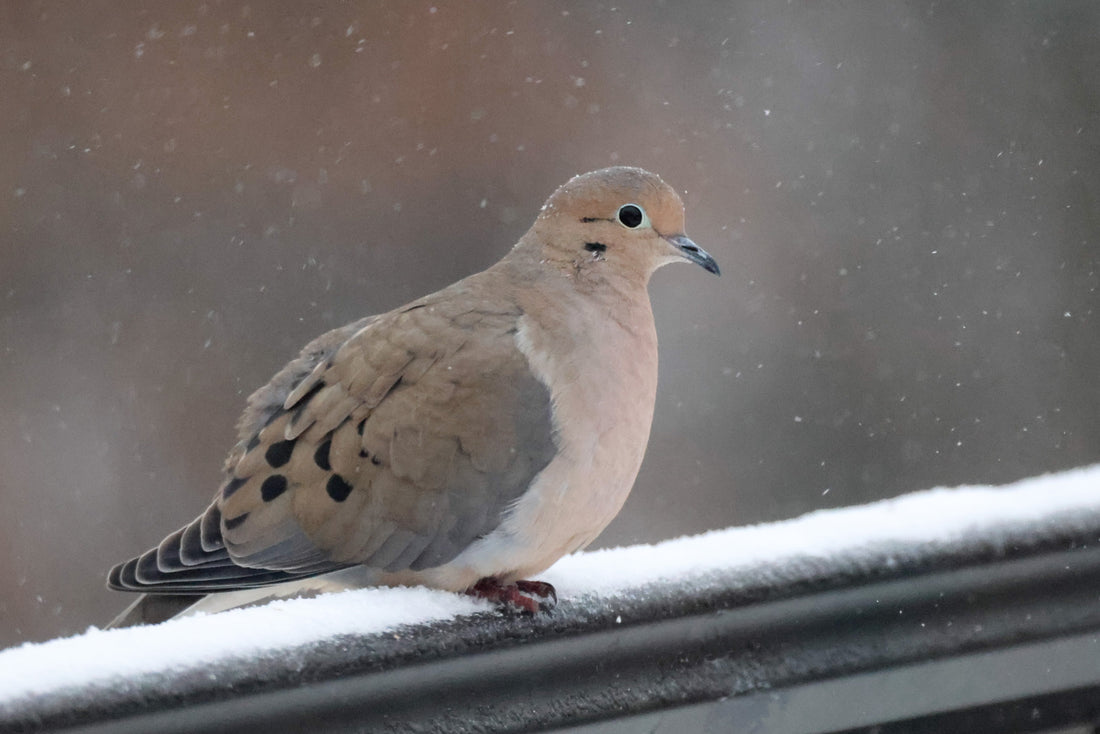
Mourning Dove
The Mourning Dove is a fairly common backyard bird in most of the US. It gets its name from the mournful song it sings. rather than the time of day. It is frequently misidentified as a Pigeon, which is a relative of the Mourning Dove. The Mourning Dove is a plump tan to light brown bird with greyish brown wings with black spots. Females and males are difficult to distinguish. Juveniles initially have more spotty plumage which they will eventually molt out of into their smoother looking adult feathers. The pattern of their initial feathers helps camouflage young doves, since they are frequently on the ground and may not be able to fly well when they fledge.

Juvenile Mourning Dove picture courtesy of Joseph Boros and All About Birds
Mourning Doves are pretty common throughout the US, and will winter in the Central to Southern US. Interestingly Mourning Doves can migrate, but it is location dependent. Mourning Doves in the Northern US will migrate thousands of miles, sometimes as far as Southern Mexico, while those in the Central and Southern US may only migrate a few hundred miles or not at all.

Mourning Doves are notorious for building nests in very inconvenient places. Their nests sometimes are comprised of a few sticks before they lay an egg, so they can typically "build" a nest fast. A quick search on the web and I found these memes.


Mourning Doves typically have two to three broods a year (up to 6!) with clutches of two eggs per brood. The hatchlings typically fledge around two weeks after hatching.
The Mourning Dove gets its name from its call, similar to crying. It can be mistaken for an owl hooting, leading to amusing mix-ups like my husband thinking he heard an owl but discovering it was actually a Mourning Dove. They also make a whistling sound with their wings. Wind vibrating their wing feathers will make this noise, which is believed to be used to warn other birds or startle predators. Below is a video of the Mourning Dove calls and their wing whistle.
Video courtesy of Bird Feeder Hub on YouTube
We are lucky to have Mourning Doves visiting our feeder, and we have had a mama Mourning Dove nest with us the past three years. She seems to prefer my hanging baskets out front, and has between two and three clutches a year. Here are some pictures from the past few successful nesting attempts.


I hope you enjoyed this blog post. The next time you are outside, listen for your local Mourning Dove. They are such beautiful birds to watch.
Information on Mourning Doves courtesy of All About Birds and Bird Feeder Hub.
